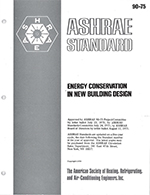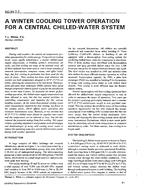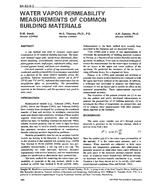Presents the results of a study investigating the effects of window U-factor changes on residential cooling loads. The DOE-2.1D energy analysis simulation program was used to analyse the hourly, daily, monthly, and annual cooling loads as a function of window U-factor. The performance of a prototypical single-storey house was examined in three locations – hot and humid, Miami, Florida; hot and dry, Phoenix, Arizona; and a heating-dominated location with a mildly hot and humid summer, Madison, Wisconsin. The results show that, when comparing windows of the same size with identical orientations and shading coefficients, windows and higher U-factors often yield lower annual cooling loads, but windows with lower U-factors yield lower peak cooling loads. This occurs because the window with higher U-factor conducts more heat from inside the residence to the outside during the morning and evening hours, when the outside air temperature is often lower than the inside air temperature; a window with a lower U-factor conducts less heat from outside to inside during summer afternoon peak cooling hours. The absolute effects are relatively small when compared to total annual cooling, which is typically dominated by window solar heat gain effects, latent loads, and internal loads. The effect of U-factor on cooling is also small when compared to the effects of both U-factor and solar heat gain load. Our modelling assumed that U-factor and solar heat gain could be independently controlled. In fact, reducing window conductance to the levels used in this study implies the addition of a second glazing layer, which always reduces solar heat gain and thus reduces annual cooling. Therefore, when compared to realistic options, e.g., single-pane clear to double-pane clear, or single-pane tinted to double-pane tinted, the double-pane unit shows lower annual cooling as well as lower peak loads.
KEYWORDS: windows, cooling load, domestic, transmittance, computer programs, thermal resistance, thermal conductivity, performance, housing, tropics, subtropics, deserts, comparing, heat flow, cooling, solar heat gain, glazing, double glazing, USA
Citation: ASHRAE Trans. 1994, Vol.100, Part 2, Paper number 3789, 50-58, 8 figs., 1 tab., 5 refs.
Product Details
- Published:
- 1994
- File Size:
- 1 file , 910 KB
- Product Code(s):
- D-17367


